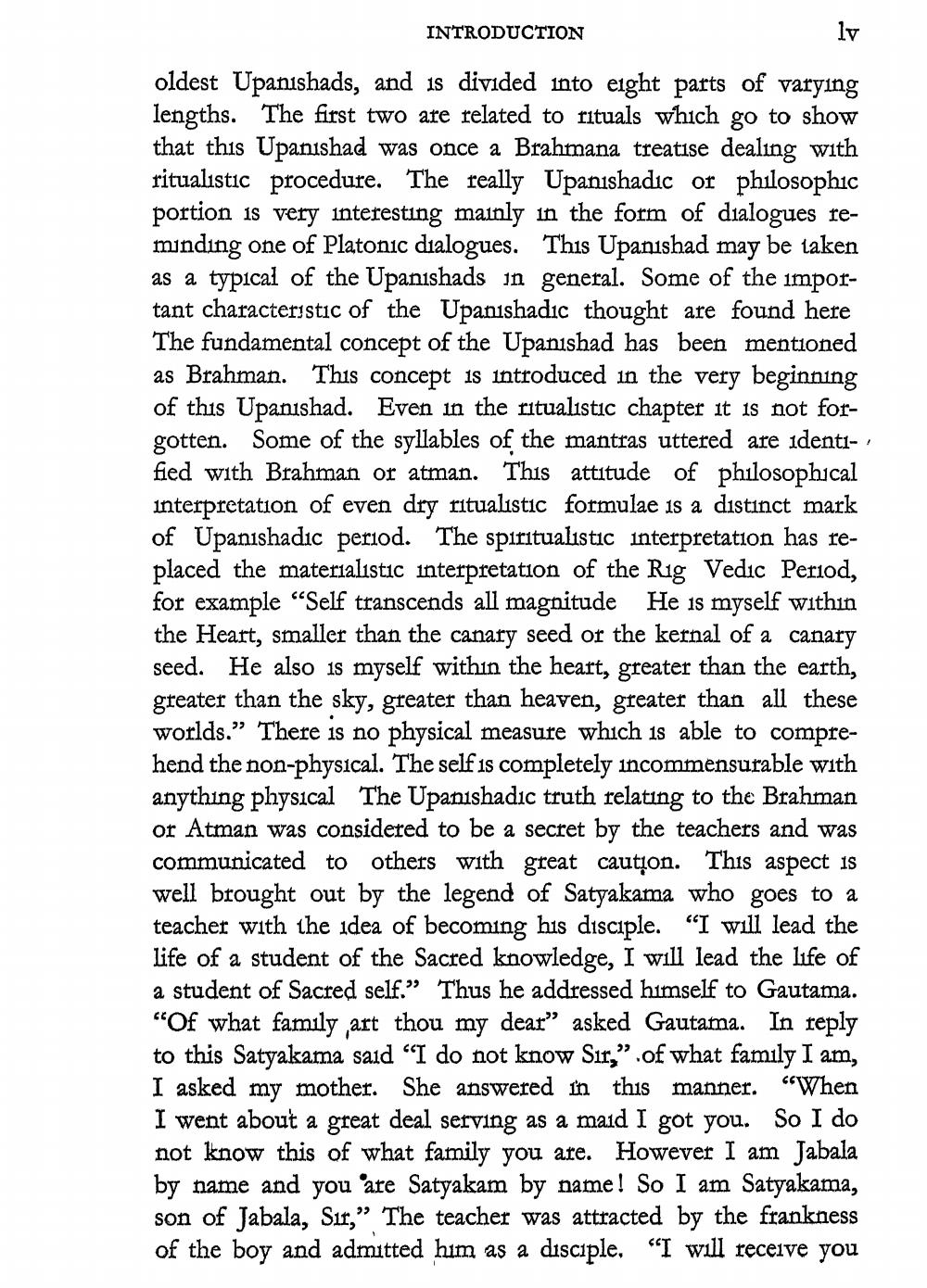________________
INTRODUCTION
oldest Upanishads, and is divided into eight parts of varying lengths. The first two are related to rituals which go to show that this Upanishad was once a Brahmana treatise dealing with ritualistic procedure. The really Upanishadic or philosophic portion is very interesting mainly in the form of dialogues reminding one of Platonic dialogues. This Upanishad may be taken as a typical of the Upanishads in general. Some of the important characteristic of the Upanishadic thought are found here The fundamental concept of the Upanishad has been mentioned as Brahman. This concept is introduced in the very beginning of this Upanishad. Even in the ritualistic chapter it is not forgotten. Some of the syllables of the mantras uttered are identified with Brahman or atman. This attitude of philosophical interpretation of even dry ritualistic formulae is a distinct mark of Upanishadıc period. The spiritualistic interpretation has replaced the materialistic interpretation of the Rig Vedic Period, for example “Self transcends all magnitude He is myself within the Heart, smaller than the canary seed or the kernal of a canary seed. He also is myself within the heart, greater than the earth, greater than the sky, greater than heaven, greater than all these worlds." There is no physical measure which is able to comprehend the non-physical. The self is completely incommensurable with anything physical The Upanishadic truth relating to the Brahman or Atman was considered to be a secret by the teachers and was communicated to others with great cautìon. This aspect is well brought out by the legend of Satyakama who goes to a teacher with the idea of becoming his disciple. “I will lead the life of a student of the Sacred knowledge, I will lead the life of a student of Sacred self.” Thus he addressed himself to Gautama. “Of what family art thou my dear” asked Gautama. In reply to this Satyakama said "I do not know Sir,” .of what family I am, I asked my mother. She answered in this manner. “When I went about a great deal serving as a maid I got you. So I do not know this of what family you are. However I am Jabala by name and you are Satyakam by name! So I am Satyakama, son of Jabala, Sır,” The teacher was attracted by the frankness of the boy and admitted him as a disciple. “I will receive you




